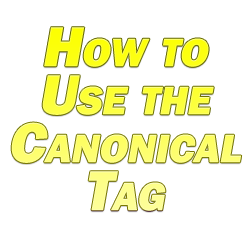As I discussed in my duplicate content penalty post awhile back, duplicate content issues are only issues when they are exist on the same website. This can happen easily depending on how your website is set up, but if you have the same content of a page which is located on different pages/URLs of your site out of necessity (for example if you have the same content under two different categories), then you’re going to have some issues. For this reason let’s talk about how to use the canonical tag.
Not only do you risk being penalized by search engines, but the search engines will only index one page between the two because they aren’t going to put two pages of the exact same content on the same site in their SERPs; so odds are when the search engine picks one to index, it may not be the one which you want appearing.
How to Use The Canonical Tag
The canonical tag is important in SEO, as a result. Let’s talk about how to use the canonical tag. Choose which page of the content which you want the search engines to recognize, then place the canonical tag which looks like this: <link rel=”canonical” href=”http://www.example.com/subdomainexample#1” /> (the URL should be the page which you want indexed) within the Head section of each of the duplicate pages.
Google will see this “hint” and recognize on the duplicate pages that they are simply duplicates of the canonical URL as designated by your canonical tag.
Since a lot of you are using WordPress, yep, there are also a number of plugins which expedite this process for you like a good plugin does; just do a search in WordPress to find a number of freebies.
